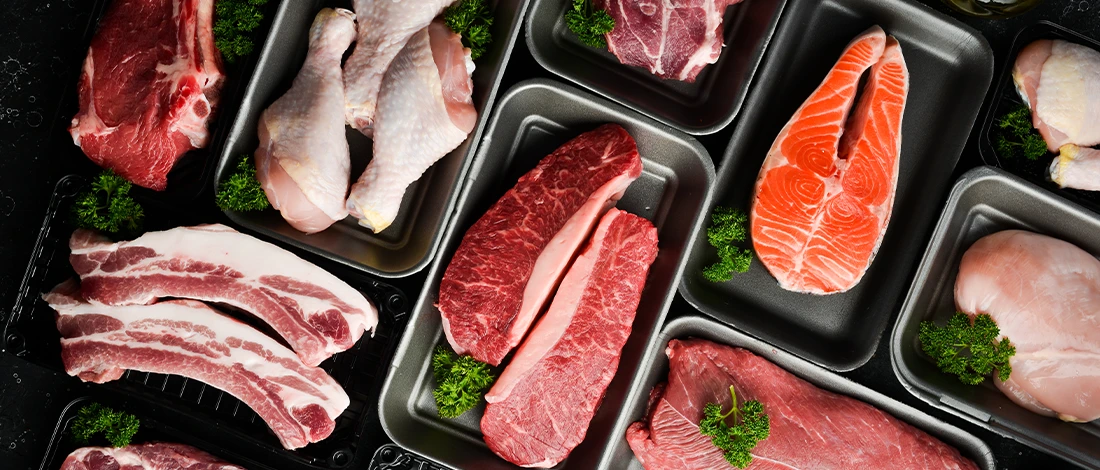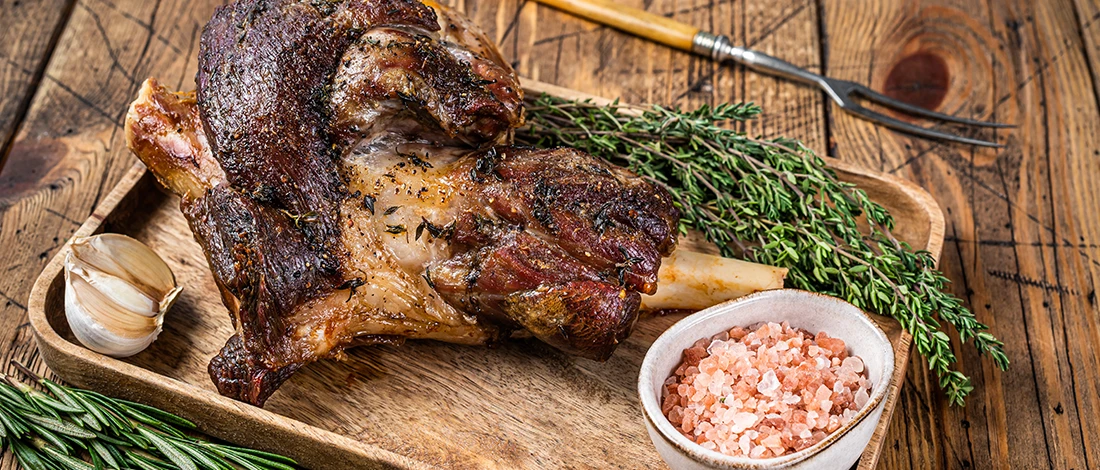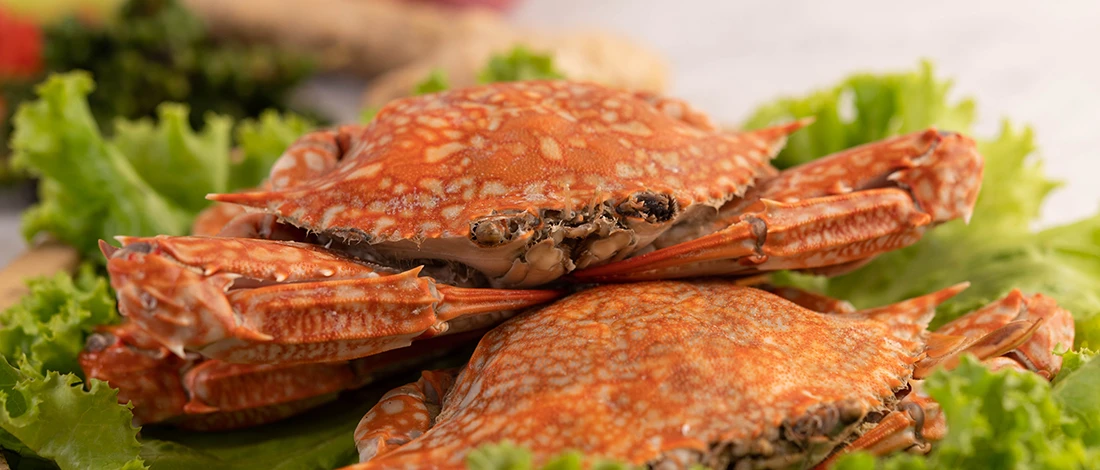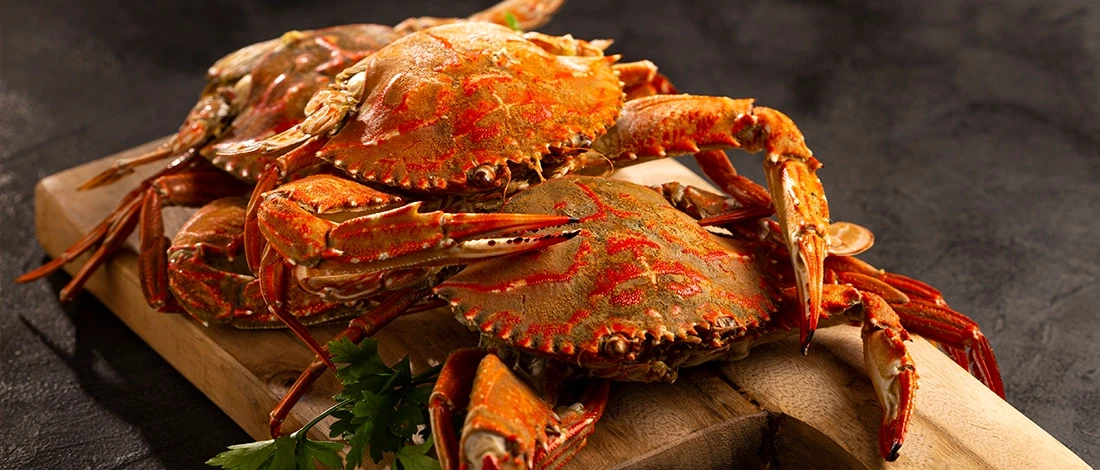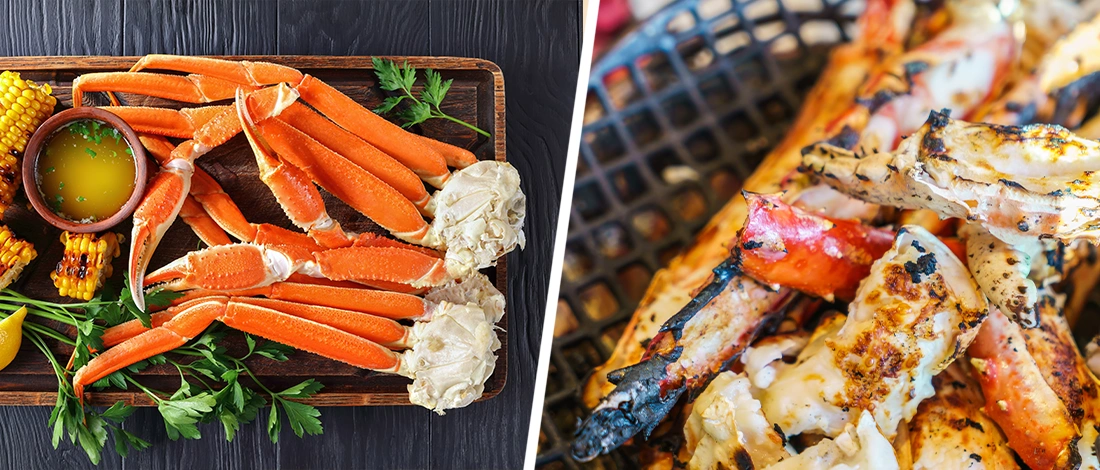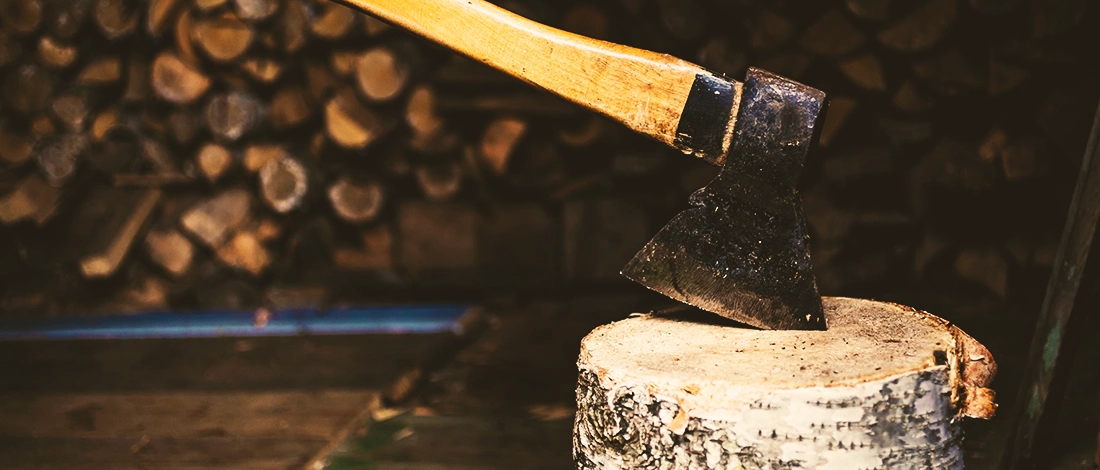I've been a liberal follower of the carnivore diet for four years now, and I love trying different restaurants' meat dishes to break the homemade carnivore meal monotony.
I unknowingly tried crab sticks (in my California rolls), and the taste and overall texture sat right with me. So I decided to look into this imitation crab and its ingredients to see if it's a dish I can add to my home menu.
Here's what I figured out.
Quick Summary
- Imitation crab, used in different restaurant menus, is made with surimi to mimic real crab.
- Real crab meat has healthier nutrition calories than imitation crab.
- Crab sticks have a higher sodium content, and eating them in excess increases heart attack risks.
What is Imitation Crab Meat?
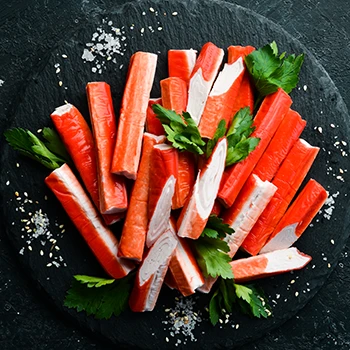
Imitation crab meat is a substitute for real crab meat made from surimi (the key ingredient) and other elements, as we'll see further down.
Imitation crab was first introduced to the Japanese people in the 1970s as an affordable type of processed crab meat.
But by the 1980s, the crab sticks had made their way into the US, with over 130 million pounds of imitation consumed through hot dog and California roll recipe dishes.
Crab stick is intended to have a similar flavor to cooked fresh crab in texture and natural flavors.
Attempts to imitate the real crab stretch to the aesthetic, which is why it's a stick of fake crab meat colored red on the outside, much like real cooked crab flesh.
Though the texture is more processed than actual crab meat, I find imitation crab doesn't taste like authentic seafood and is more seasoned with ingredients that mimic the crab taste.
Major Crab Stick Ingredients

Here are the main imitation crab ingredients:
- Surimi seafood: This is the main ingredient in imitation krabs. Typically, food manufacturers use Alaskan pollock, a species of white fish, to make surimi.
- Starch: Starch helps stiffen the surimi and makes it freezable. Potato, corn, and tapioca starch are commonly used in the process.
- Egg whites: These add shine to imitation crab while also increasing texture and color.
- Water: Water contributes to the proper texture of the final product, and it's used to combine everything.
- Sugar: This acts as a sweetener to the crab meat. I also discovered that including sugar during the processing helps when freezing and thawing the final product.
- Salts: Potassium chloride and sodium chloride are the most common salts used here. They add flavor to the meat and also help to firm the stick structure.
- Additives: Other additives like monosodium glutamate (MSG), crab extract, benzoate preservatives, and carrageenan gum are used to make crab sticks. These additives help improve the product's color, flavor, and shelf life.
To make crab sticks, the surimi is bound with all components, including crab flavor and, on occasion, MSG. The paste is cooked before being molded into stick shapes that resemble crab legs.
To simulate the color of cooked crab, a mixture of red/orange food coloring is put on the exterior of the imitation krabs.
I occasionally use crab sticks to make breaded fish products with different delicious recipes that call for ingredients like:
- Cream cheese
- Fish paste
- Lemon juice
- Beet juice extract
- Minced fish
- Vegetable oil
Crab Sticks Nutritional Profile
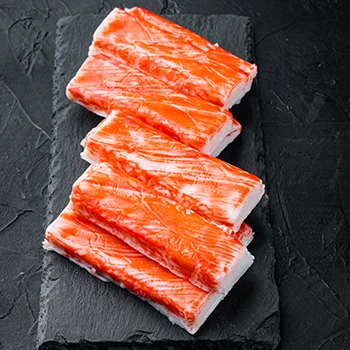
Crab sticks are more of a high-carb, low-protein food.
A 3-ounce portion of imitation crab has roughly 83 calories, 6 grams of protein, and 13 grams of carbohydrates, 5 of which are from the sugar ingredient.
The exact amount of real king crab contains the same number of calories but 16 grams of protein (10 more grams) and no carbohydrates.
Proteins are necessary for the diet because they aid in repairing and growing tissues and cells. They are also crucial in the development and growth of adolescents and youngsters [1].
While a serving of real king crab contains 380 milligrams of vital omega-3 fatty acids, imitation crab has only 20 milligrams, amounting to more than 95% loss.
A healthy adult's salt consumption should be less than 1,500 mg daily. Just 3 ounces of imitation crab flesh has 720 mg of sodium, which is half your daily allowance.
Eating many imitation crab products raises your risk of high blood pressure and heart disease [2].
When you use imitation crab, I recommend pairing it with alfredo sauce-crab salad or any seafood salad to lessen the sodium concentration.
A 3-ounce serving of imitation crab flesh contains around 240 milligrams of phosphorus, way less than the daily 700mg dietary need.
Imitation vs. Real Crab Meat

If you're looking for a reliable and authentic place to source fresh additive-free seafood meat, ButcherBox is the best place to start.
Choosing imitation crab fish sticks over real crab might not be the best idea. Let's look at a side-by-side comparison of imitation crab vs real crab meat.
Nutrition
Real crab has a substantially higher nutritional value than counterfeit crab.
They're also two completely distinct kinds of meals. Most calories in real crab flesh come from proteins, whereas most calories in imitation crab come from carbohydrates.
Furthermore, real crab flesh contains more omega-3 fatty acids and vitamins and minerals such as:
- Selenium
- Zinc
- Iron
- Vitamin B12
Imitation crab cakes have starch, so I wouldn't recommend it if you're a gluten-free eater; instead, go for the real crab meat that is gluten-free.
Real crab is generally healthier. On the other hand, imitation crab has less sodium than actual crab flesh.
Taste
Imitation crab is saltier than and has a milder crab-ish flavor. It's crucial to note that krab sticks are made with additives that simulate the taste of real crab meat.
On the other hand, real crab meat has a delicate, sweet, and oceany flavor. Because crabs live in a diverse aquatic environment, the ocean salts and minerals infuse into the crab so the real meat can be briny.
“Imitation crab has a duller, dense and rubbery flavor whereas fresh crab offers a more natural, sweet tasting and flaky touch. "
- David Watsky, Culinary Expert
Texture
Crab meat is tender when fully cooked, but I find shredded imitation crab chewy and not as flaky.
Other Meat-Related Articles:
FAQs
What is Imitation Crab Meat Made of?
Imitation crab meat is made of surimi and other ingredients like starch, sugar, and salt.
Is Imitation Crab Meat Good For You?
Imitation crab meat is not very good for you because it has fewer proteins and other essential nutrients that are abundant in real crab meat.
What is the Point of Imitation Crab?
The point of imitation crab is to have a cheaper crab meat alternative that tastes and feels like the actual crab meat.
Is Imitation Crab Meat a Good Source of Protein?
No, crab meat is not a good source of protein. A 3-ounce serving only has 3g of protein, while real crab meat of the same serving size has 13g.
References:
- https://medlineplus.gov/ency/article/002467.htm#
- https://www.cdc.gov/heartdisease/sodium.htm%23


